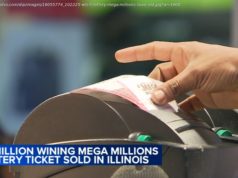Instruments are among 140 pianos owned and managed by Australian university, which has one of the world’s most significant collections
Four rare pianos up to three centuries old have been sent from Australia for an exhibition in “dynamic and ambitious culturally” Hong Kong, with an eye also on the mainland China market.
The four instruments are among 140 pianos owned and managed by Perth’s Edith Cowan University (ECU). It has one of the world’s most significant collections of 18th and 19th century pianos, or fortepianos as the instruments from that era are commonly termed.
ECU research professor and renowned fortepianist Geoffrey Lancaster has explored collaboration with local institutions such as the Hong Kong Academy for Performing Arts and HKU SPACE over education, research and restoration of the collection.
“There are some common attributes between ECU and Hong Kong, which are very dynamic and ambitious culturally,” he said in an interview. “Hong Kong is the first place we looked at.”
Lancaster said the Hong Kong exhibition could be “catalytic” in bringing fortepiano culture further into China, where there are about 40 million pianos.
The four fortepianos will be on show on November 13 at Tai Kwun Centre for Heritage and Arts in Central, the revitalised historical compound of the former Central Magistracy and Victoria Prison.
That evening, Lancaster will also perform four of Mozart’s sonatas on a fortepiano replica.
The four pianos, which were donated by Sydney collector Stewart Symonds in 2016, would return to Australia after the show, Lancaster said.
Along with most of the 140-piece portfolio, the pianos would embark on a A$475,000 (US$344,000) restoration programme in London over the next 30 years, he added.
“This is an ongoing effort for the next 500 years,” Lancaster said.
The historical keyboards were the early form of pianos made in the era of composers Haydn, Mozart and Beethoven.
One of the instruments on show was made in London in 1786 and brought to Australia in 1788 on board the Sirius, flagship of the First Fleet from England. The First Fleet piano, considerably smaller than a modern version, was found in an old farmhouse outside Sydney in 1965. At the time, its owner, who stored it in the laundry, sold it to a collector for cash to buy a washing machine.
“There are not more than five of this model left in the world,” Lancaster said, pointing to the piano which was temporarily stored in the Australian consul general’s residence in Deep Water Bay.
Players of the First Fleet piano left their mark on the instrument over the years, with hollows in the most frequently played keys.
Lancaster then pointed to an upright piano made in London by Scot John Watlen in 1816. “This is the only one left in the world,” he said.
The four pianos were heavily insured before being packed in tailor-made cases and flown to Hong Kong.
Paul Tunzi, a technician of master pianos for 42 years, said the biggest challenge in preserving these fortepianos was weather and humidity.
“The collection is surprisingly robust and was built so well that it has lasted for several hundred years,” he said.
Tunzi said different skills and knowledge were needed to preserve a fortepiano compared to a modern piano, with the latter usually having broken components replaced.
“They are what they are,” he said of the historical pianos. “A broken hinge or part and scratches tell a story.”
Well-worn keys were also part of the story, he said.
In Hong Kong, piano lessons are a popular extracurricular activity for children and Lawrence offered a small piece of advice.
“Even if people are learning the piano but they do not like to do it, or they are not gifted at it or forced to do it, it can’t do any harm,” he said.
“The ultimate quest for truth is through human experience. Music is one of the doors that unlocks the journey into that discovery.”






